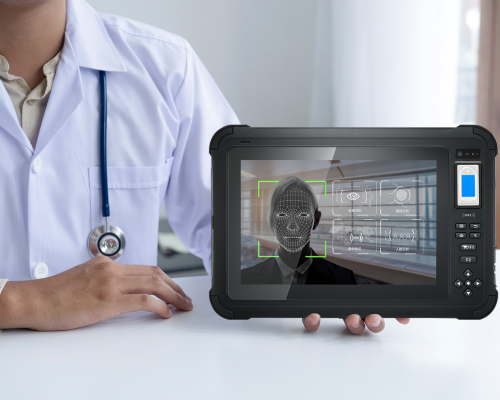Newsletter Sign Up
Receive our latest updates about our products and promotions.

In traditional medical care, there are many steps that require nurses to handwrite relevant information and transcribe it into computers and hospital systems, which is time-consuming, labor-intensive and error-prone. In addition, there are also pain points and difficulties in areas such as medical order execution, sample collection and dispensing, such as the uncertainty of manual verification, the accuracy of matching samples and patients, etc. These problems may lead to medical errors.
Through digitization, mobility, networking and other means, achieve a comprehensive upgrade of hospital information management, improve hospital work efficiency, ensure the timeliness and effectiveness of data, quickly and accurately transmit key information, promote the construction of hospital informatization and orderly management of laboratories.
Use information technology for management, combined with barcode, RFID and other technologies to achieve tracking and management of equipment and items. At the same time, establish a modern medical supplies management information system, through real-time monitoring and inventory management of medical supplies, improve the efficiency and accuracy of the use of supplies, and reduce the impact of stockouts and supply disruptions.
Use information technology for management, combined with barcode, RFID and other technologies to achieve tracking and management of equipment and supplies. At the same time, establish a modern medical materials management information system, through real-time monitoring and inventory management of medical materials, improve the efficiency and accuracy of materials use, and reduce the impact of stockouts, supply disruptions and other situations.
With the continuous development of 5G technology, smart wearable devices and mobile handheld devices, the development prospects of telemedicine are very broad. By strengthening security, optimizing the allocation of medical resources, unifying technical standards, optimizing communication experience, and strengthening supervision and legal responsibility, we can further promote the popularization and development of telemedicine services so that more patients can benefit from telemedicine services.
Personal privacy and medical information security issues in telemedicine need to be fully guaranteed, otherwise it will pose serious threats to patients' property and lives. Doctors and patients need to perform identity authentication and information security verification.

The communication between doctors and patients needs to be achieved through the network. This requires telemedicine systems to have high quality, stable communication networks, real-time communication capabilities and various high quality sensors.

The communication between doctors and patients needs to be achieved through the network. This requires telemedicine systems to have high quality, stable communication networks, real-time communication capabilities and various high quality sensors.

In order to ensure the identity security and information security of doctors and patients, multiple methods such as face recognition, fingerprint recognition and identity recognition technology can be used for identity authentication to ensure that only authorized personnel can provide medical services.

When real-time communication is established between doctors and patients, high-quality sensors can be used. For example, high-definition cameras, microphones, speakers, ECG sensors, blood pressure sensors, temperature sensors, blood glucose sensors and other sensors can be used to monitor and diagnose patients.

Receive our latest updates about our products and promotions.
Thanks for subscribing!
This email has been registered!